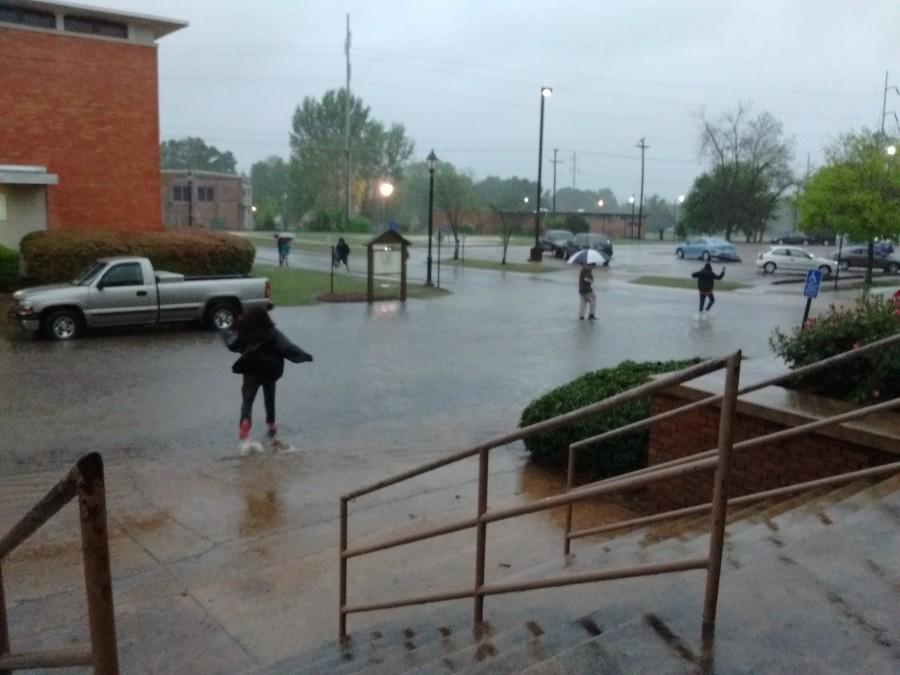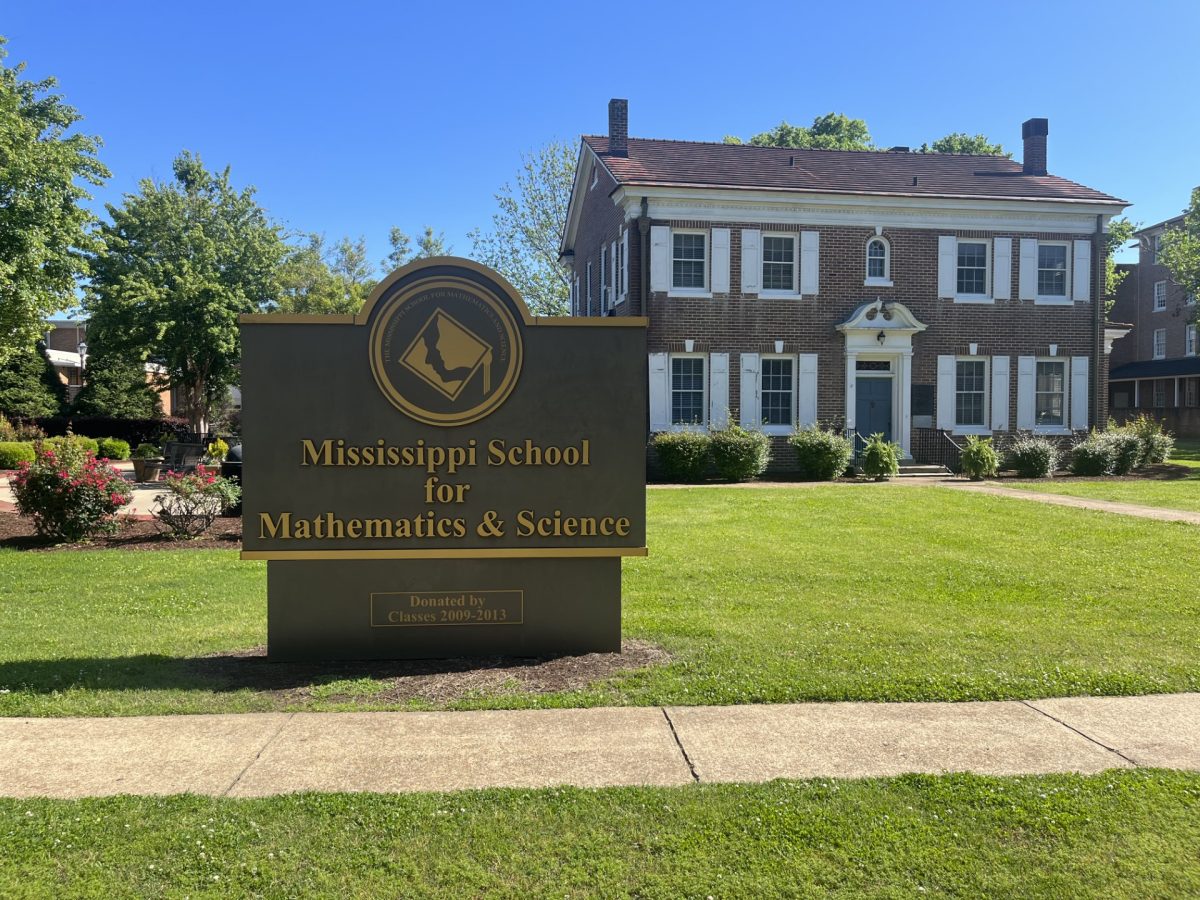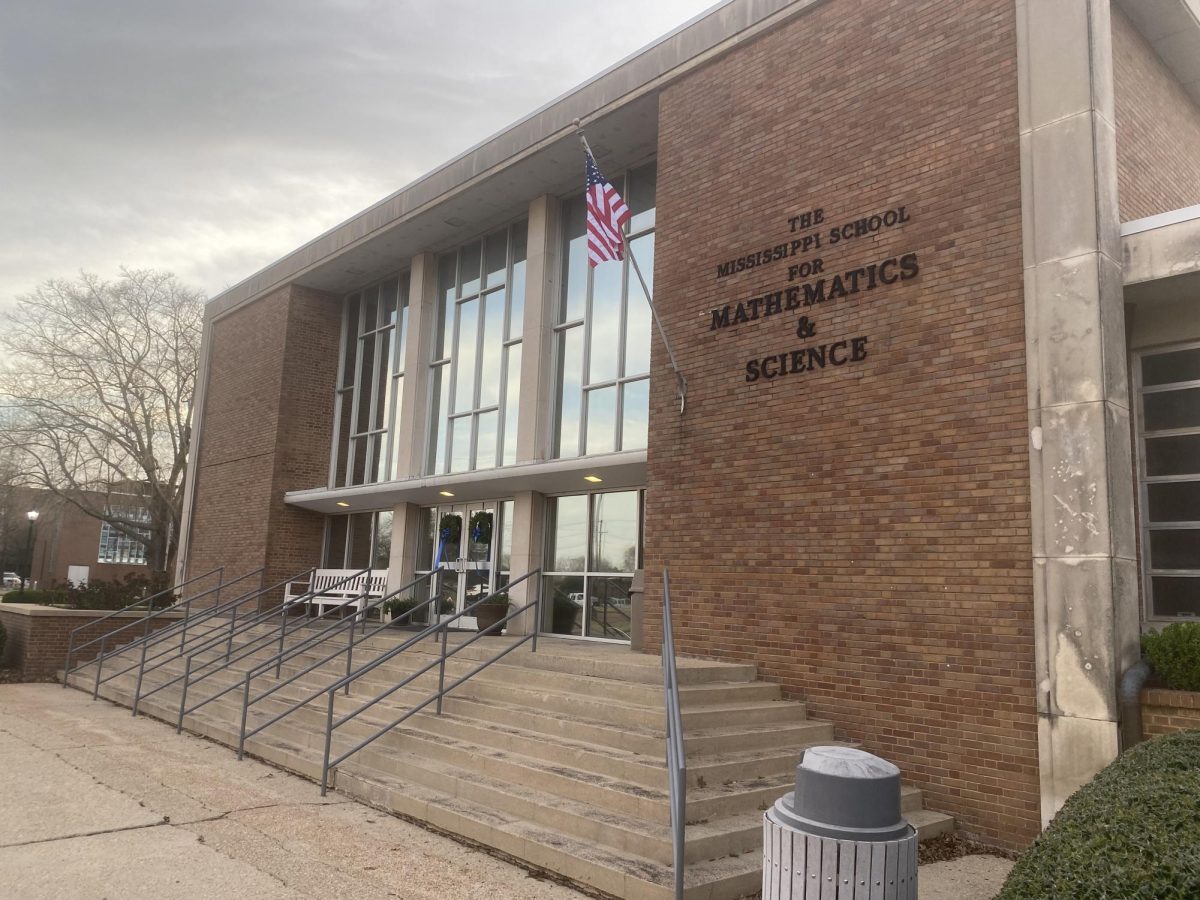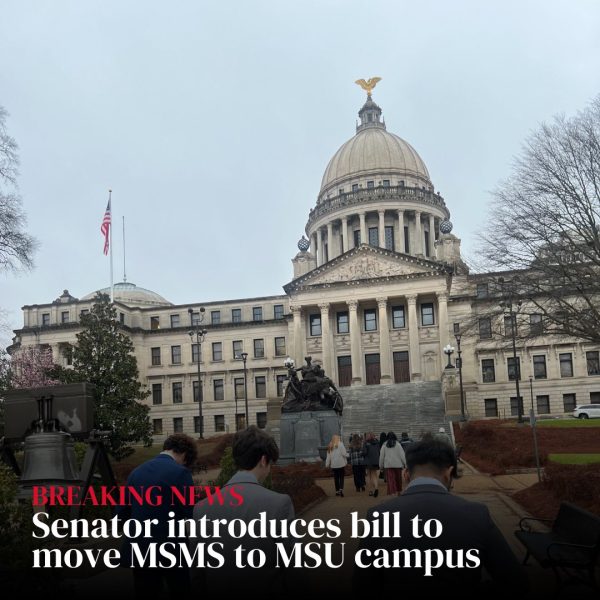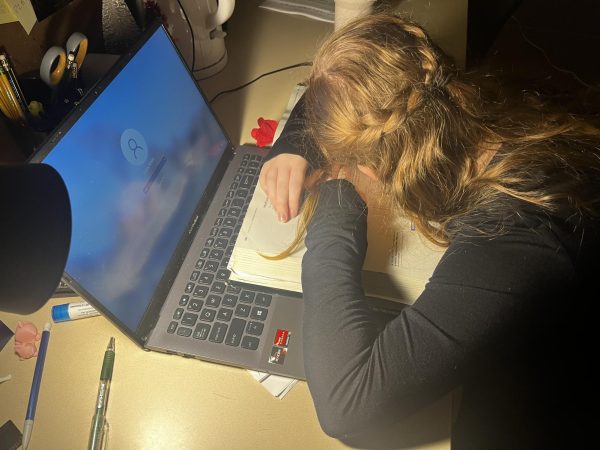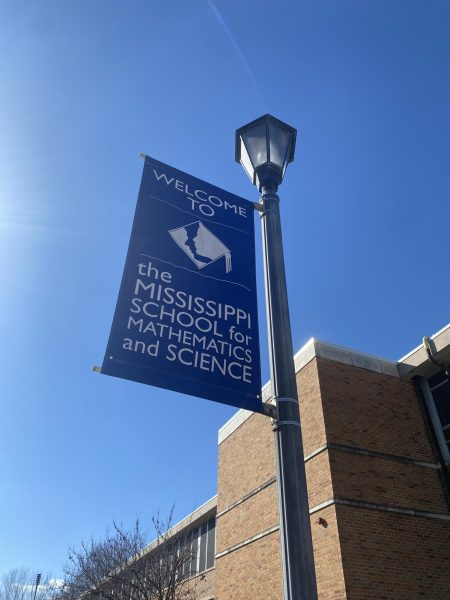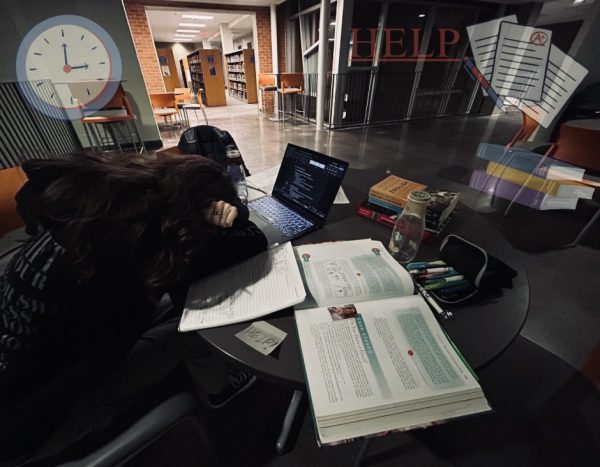Mother Nature V.S. Students of MSMS
MSMS students trudging through “Lake Hooper” which forms after heavy rainstorms hit campus.
April 11, 2016
Students of MSMS come from all parts of the state, and no two places are the same. Lifestyles for the students differ in categories like local traditions and experience with inclement weather. Mississippi residents occasionally experience harsh elements, and the state encompasses a wide array of possible disasters.
A consistent threat throughout the state is flooding during severe thunderstorms. Senior Priya Sanipara lives in Vicksburg, which lies beside the Mississippi River. She said, “The worst flooding I’ve experienced was when the Mississippi River flooded during April and May of 2011. The flood broke the record for the major floods of 1927 and 1993. Most of downtown Vicksburg was filled with flood water, and many students had to evacuate their homes. I don’t live near downtown, so I was lucky. I remember taking a trip downtown during the flooding, and the water level could be seen from up high on a hill. Vicksburg has many casinos on the river, so they had to be closed also. It took a while before the water was pumped out and everything was back to normal.”
Senior Hakeem Mikle also experiences flooding in Gulfport, a city on the Gulf Coast. Hurricanes and tropical storms are dangerous possibilities there throughout the summer months. Mikle said, “When there’s a storm, we put sandbags around my house in preparation for flooding.”
Another coast MSMS student Jake Bozlee is from Long Beach, and his life was heavily affected by Hurricane Katrina in Aug. of 2005. Bozlee says that Katrina was the worst run-in that he has had with weather. Under the threat of Katrina, Bozlee said, “My family left to move in with friends in northern Louisiana. When we came back, the whole apartment complex was destroyed.” For preparation of hurricanes, Bozlee boards up his windows, and if the storm is too bad, he will evacuate the area.
My high school’s baseball field was entirely wiped out and the gym was pretty badly damaged, the scariest part was how for months after you would still find parts of houses lying in the street.
Gillian Sayre is from Hattiesburg, and her experience lies more in tornados than flooding. She was out of town for the tornado of Feb. 10, 2013, but her family was still there. Sayre said, “My high school’s baseball field was entirely wiped out and the gym was pretty badly damaged, the scariest part was how for months after you would still find parts of houses lying in the street. I had a friend that lived in a trailer home and the entire thing was picked up and dropped upside down, thankfully they weren’t there at the time. My house is about five blocks from its path, so we definitely got lucky that it stayed along Hardy Street.”
In preparation for terrible weather, Sayre and her family make sure that they have lanterns and bottled water, and they stay in their hallway because it does not have windows until the tornado threat has passed.
At MSMS, protocol for tornados includes listening for warning sirens that indicate the need to find a safe place until the threat is gone. In the dorms, students and faculty relocate to the first floor hallways of the buildings. The procedure is similar in Hooper and Shackleford, the academic buildings.

